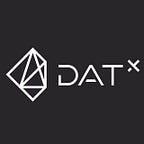[DATx Digital Advertising Mini Class] Week 4: Lurking in the Shadows — Ad Fraud
Tech development is a double sided coin. With the development of new technologies to improve digital advertising efficiency came new ways to hack and scam for a piece of the pie in the expanding digital advertising market.
Today we’re diving into the murky world of ad fraud.
Ad fraud has become a major stain on the digital advertising industry’s reputation. This year, ad fraud is estimated to cost the industry $19 billion, rivaling the scale of the drug trade. Coming out to about 10% of the global digital advertising industry market, ad fraud has major implications for the future of digital advertising.
First, how does ad fraud work?
Bot traffic is the most common form of ad fraud. Fraudsters use bots, programs that perform automated tasks over the internet, to carry out automated actions measured in key performance indices. Hackers take control of computers through malware and run bots on armies of infected computers to view and click on ads across the internet, driving up costs for advertisers buying CPM and CPC ads.
Click farms are commonly operated in developing countries with low wages. They employ large amounts of workers whose job it is to click on ads and posts to boost up numbers while avoiding bot detectors filtering mechanical clicks and scroll actions.
Domain spoofing was the hot topic ad fraud technique of last year. Despite having been an issue for years, conversations surrounding this type of fraud spiked with the uncovering of first the “Methbot” scheme earlier last year and then the “Hyphbot” scheme last November.
Domain spoofing is done by selling programmatic inventory with legitimate seeming domain names, then switching the ad space to low quality domains with bot traffic. This is done through a variety of methods such as URL substitution, cross embedding, or injecting ads on premium sites through malware infected browsers.
Once the full scope of domain spoofing was revealed, the industry quickly responded with the development of ads.txt, a public record of “Authorized Digital Sellers” for advertisers to filter for genuine publishers.
But despite recent developments, ad fraud still persists.
Ad fraud is lucrative largely due to the industry’s notorious opacity, which makes accountability hard to enforce. With the centralized data storages guarding and siloing off information, all parties face difficulties verifying the massive amounts of information being generated. Fraudsters siphon off money behind the scenes, unseen and unheard, or are sometimes even employed by unscrupulous businesses to drive up the advertising costs of their competitors. On top of all of that, ad fraud is still not technically illegal.
DATx understands that transparency and anti-fraud initiatives come hand-in-hand. DATx is developing its own public blockchain, DATxChain. The major advantage of blockchain is the transparency that comes from being an immutable ledger of information, making it easy to verify all relevant KPI measurements factored in ad pricing.
Advertisers on the DATx platform are protected from ad fraud with the platform’s own anti-fraud system. The DATx anti-fraud system consists of sophisticated algorithms verifying each and every click and view recorded on the DATxChain, analyzing for timestamp abnormalities, device authentication, IP dispersion calibration strategies, and other variables based on DATx user behavior records.
By pairing blockchain technology’s transparent and immutable ledger with a robust anti-fraud system, DATx is able to penalize bad actors and significantly raise the stakes for ad fraud in the ecosystem. On the DATx ecosystem, with higher quality publisher traffic and increased transparency, ad fraud will be a thing of the past.
